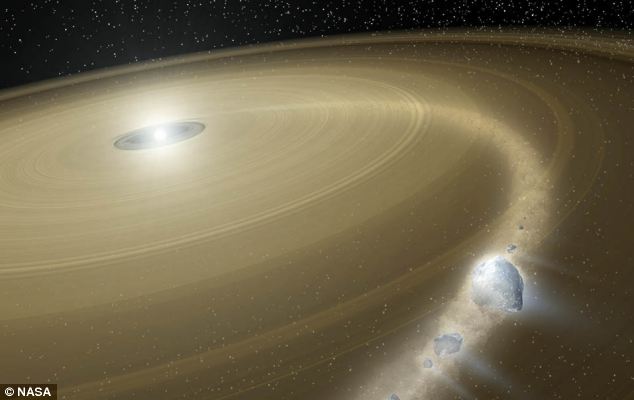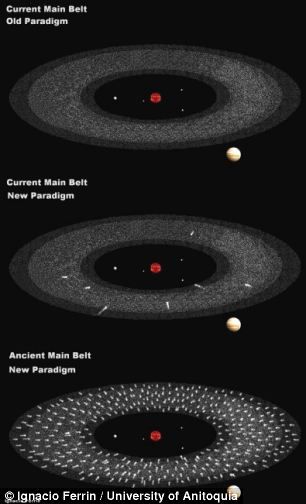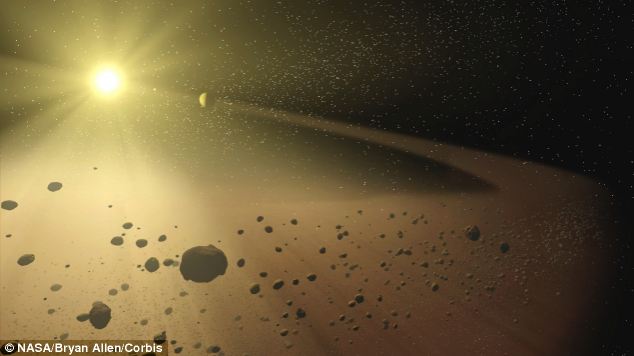
And, to the surprise of astronomers, a number of comets in this graveyard have come back to life after being dormant for what could have been thousands or even millions of years.
The findings, by a Colombian team, contradict the long-standing view that the main asteroid belt was once populated by thousands of comets which ultimately burned out as they aged.
Over the past ten years researchers have found 12 active comets in the asteroid belt.
The mystery of the reactivated comets led the Colombian team to investigate their origin.
Their findings suggests that these comets came back to life after moving closer to the sun.
The astronomers believe other inactive comets in the region may flare up when a stray gravitational force from Jupiter nudges them.

'We have found that some of these are not dead rocks after all, but are dormant comets that may yet come back to life.'
Surprisingly, this can happen fairly easily. If nudged by the gravitational force of Jupiter, the shape of comet orbits can change, leading to a decrease in the minimum distance between the comet and the sun.
The little extra energy they receive from the sun is then sufficient to revive them from the graveyard.
'These objects are the 'Lazarus comets', returning to life after being dormant for thousands or even millions of years,' said Professor Ferrin.
'Potentially any one of the many thousands of their quiet neighbours could do the same thing.'
The new work looked at a distinct region of the solar system, the main belt of asteroids between the orbits of Mars and Jupiter.
This volume of space contains more than 1 million objects ranging in size from 1 m to 800 km.
Comets are amongst the smallest objects in the solar system, typically a few km across and composed of a mixture of rock and ice.
Comment: Comets are not "dirty snowballs" according to James McCanney and Walt Thornhill. In the electric comet theory, comets are debris produced during violent electrical interactions of planets and moons in an earlier phase of solar system history. For a more detailed explanation of the electric theory of comets, read:Evidence Confirms Electric Comet Model and Planet-X, Comets and Earth Changes by J.M. McCanney
If they come close to the sun, then some of the ice turns to gas, before being swept back by the light of the sun and the solar wind to form a characteristic tail of gas and dust.
Most observed comets have highly elliptical orbits, meaning that they only rarely approach the sun.
Some of these so-called long period comets take thousands of years to complete each orbit around our nearest star.
There is also a population of about 500 short period comets, created when long period comets pass near Jupiter and are deflected in orbits that last anything between three and 200 years.
Although uncommon events, comets also collide with the Earth from time to time and may have helped bring water to our planet




wasn't there a planet between Mars and Jupiter which went kaboom when another large body collided with it, hence the Asteroid belt